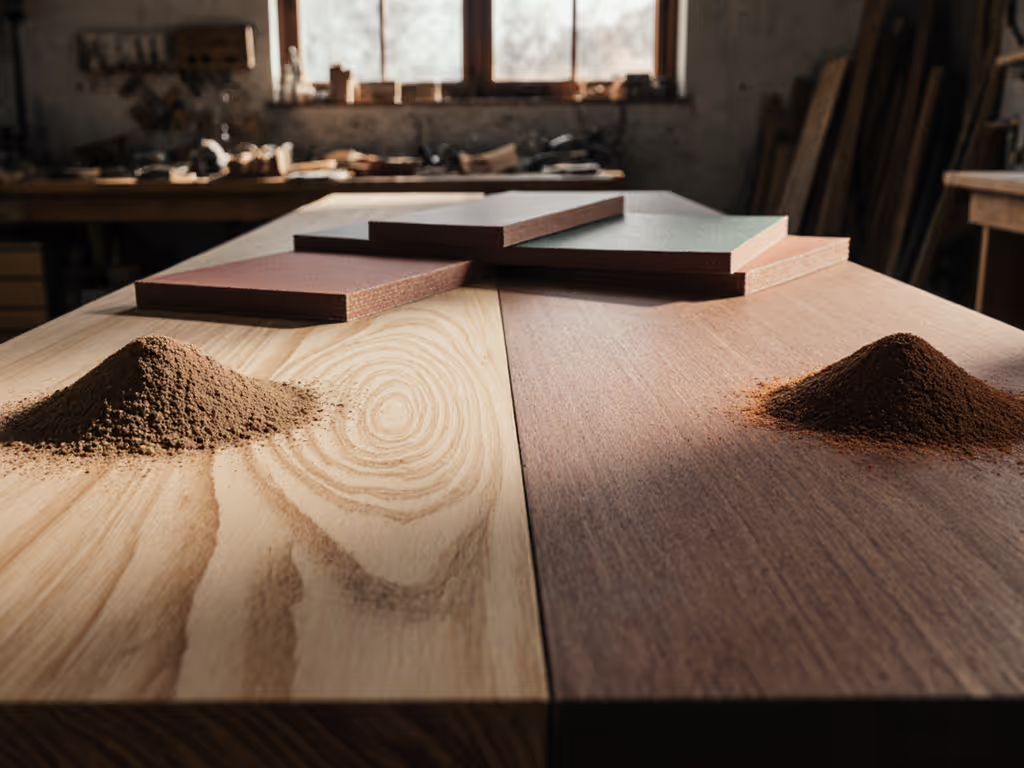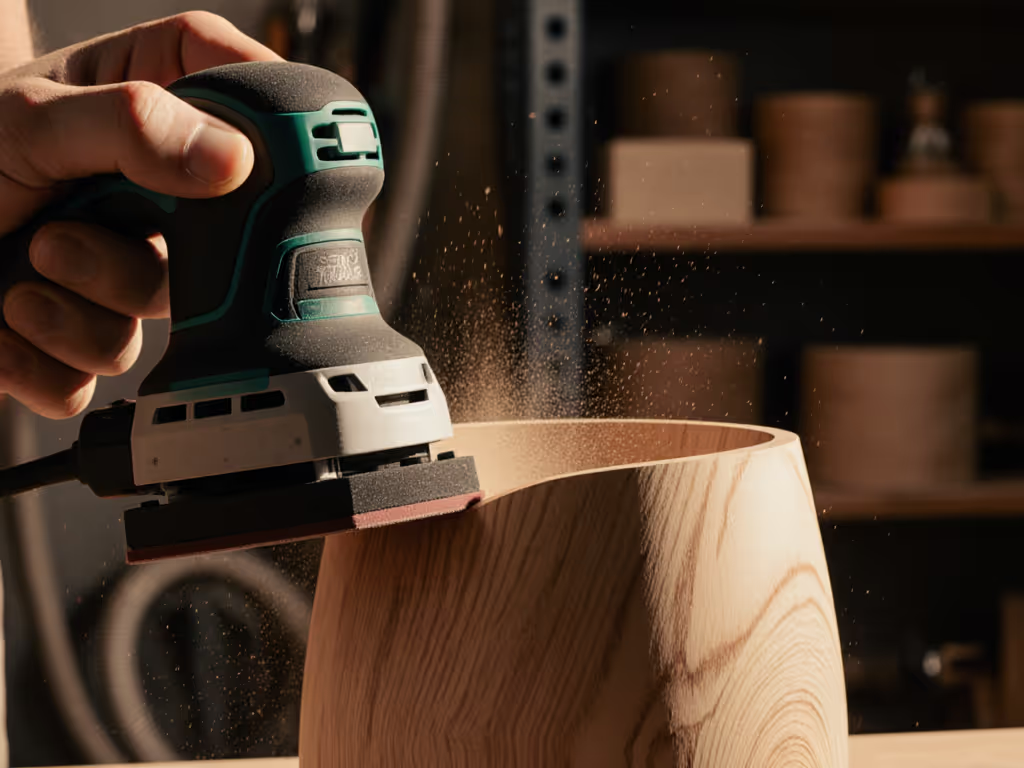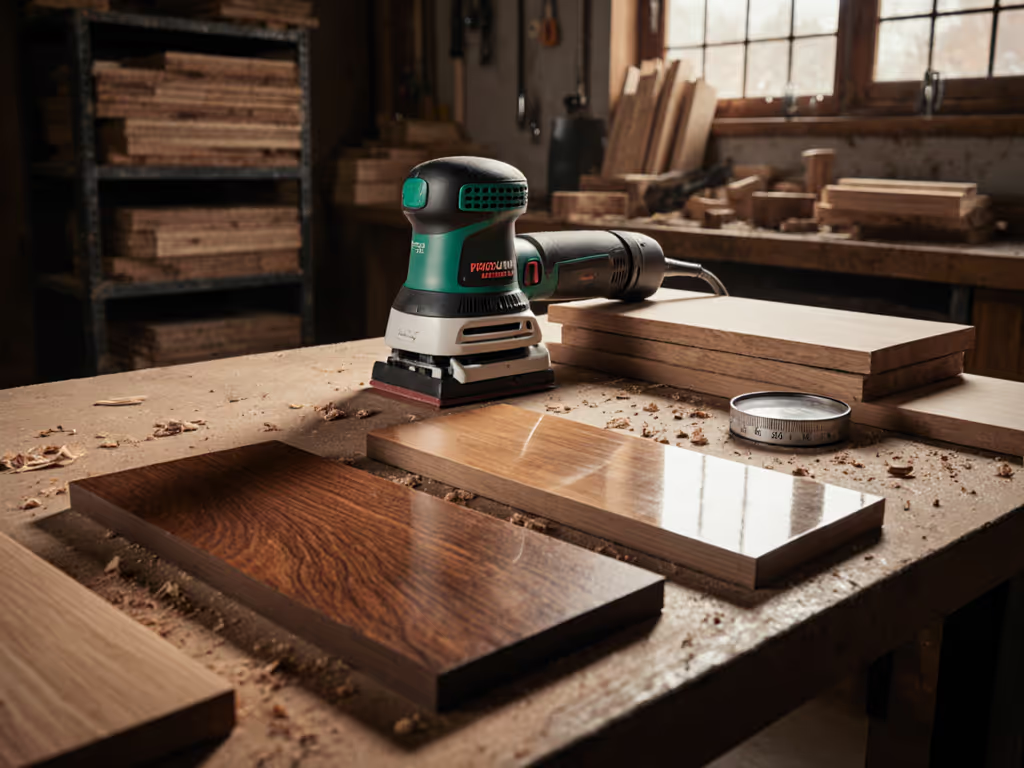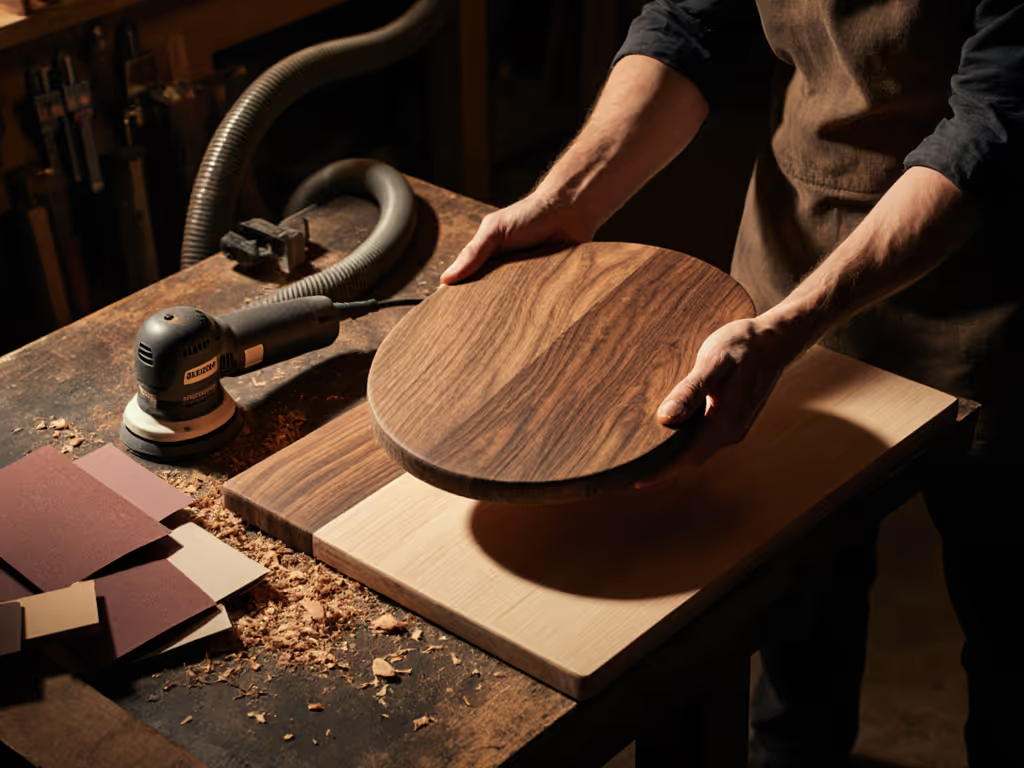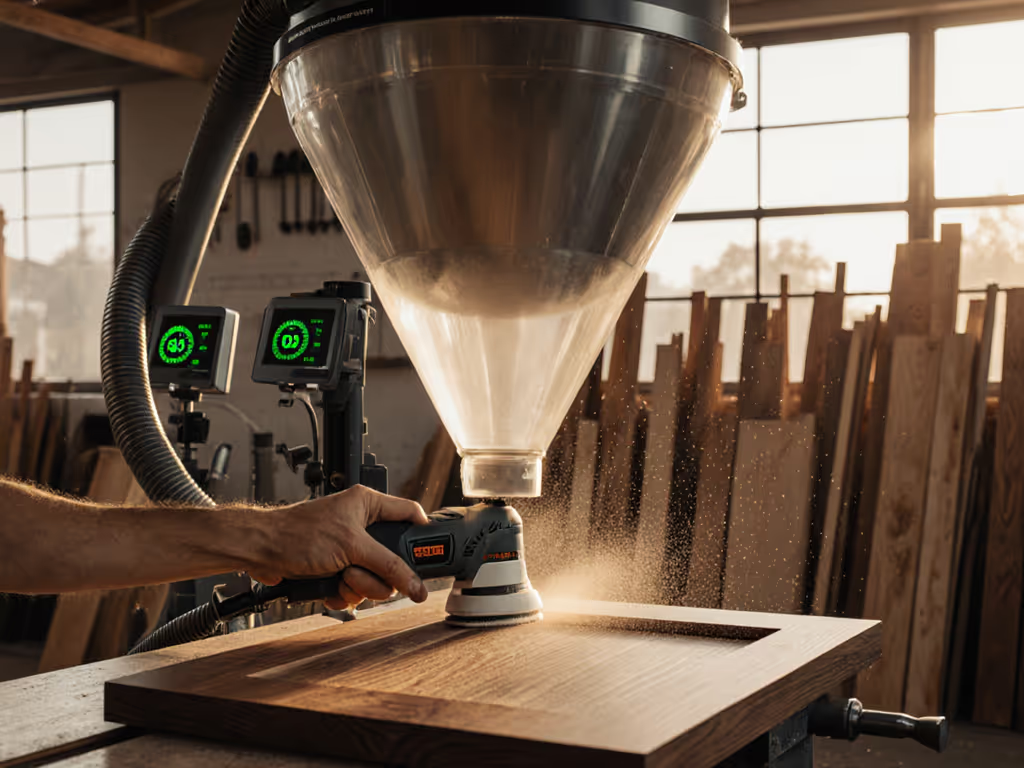
Exotic Wood Sanding Done Right: Precision Techniques
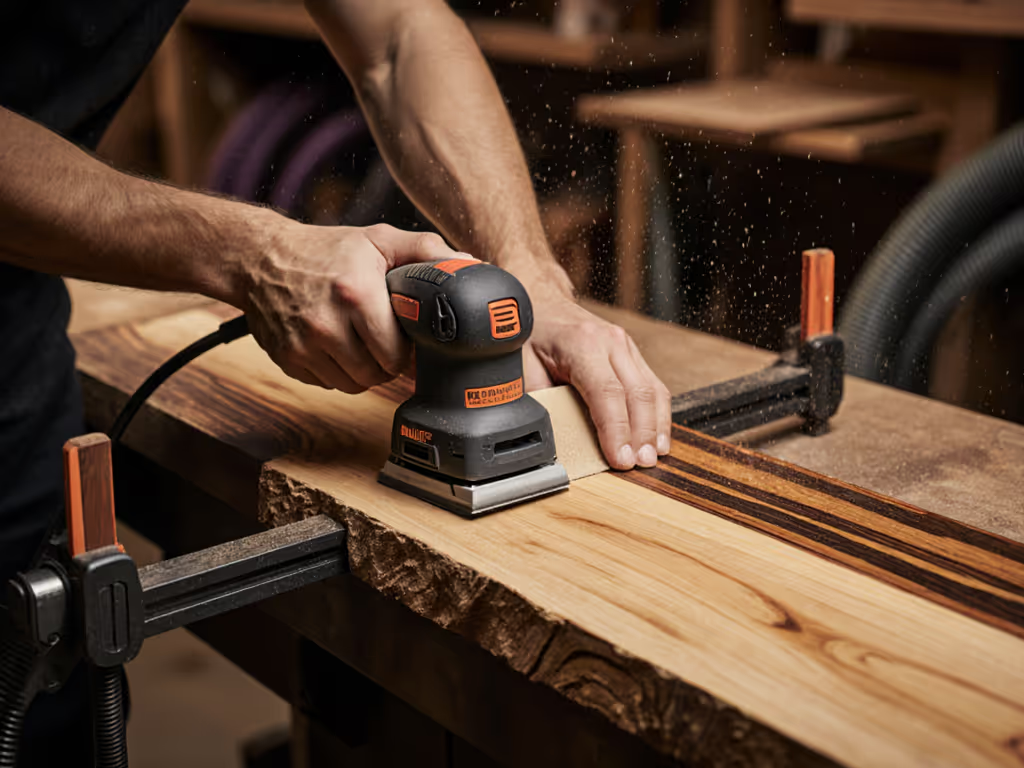
Mastering exotic wood sanding requires more than technique, it demands understanding the physics of dense, oily fibers and implementing controls that protect both your surface and your crew. When executed properly, specialty wood finishing on tropical species becomes a predictable process where healthy hands and lungs are never sacrificed for speed. Let me walk you through the data-driven approaches that deliver show-floor results while keeping your team safe from dust and vibration hazards.
protect hands and lungs
FAQ Deep Dive: Exotic Wood Sanding Fundamentals
Q: What makes exotic woods particularly challenging to sand compared to domestic species?
A: Exotic woods present three distinct challenges that alter your approach: density, oil/resin content, and figure variation. Brazilian Cherry can exceed 2,800 lbf on the Janka scale (vs. 1,360 for oak), while Ipe often hits 3,680 lbf. This density requires precise orbital parameters (typically 3-5 mm orbits at 10,000-12,000 OPM) to prevent burnishing without causing tear-out on figured grain. The natural oils in woods like Teak create a lubricating barrier that reduces abrasive cutting efficiency by 30-40% based on industry abrasion tests. Don't assume standard grit sequences apply; a 100-grit belt on Ipe often leaves visible scratches that require extra steps to remove. Always reference the wood's specific density and oil content before establishing your sanding regimen.
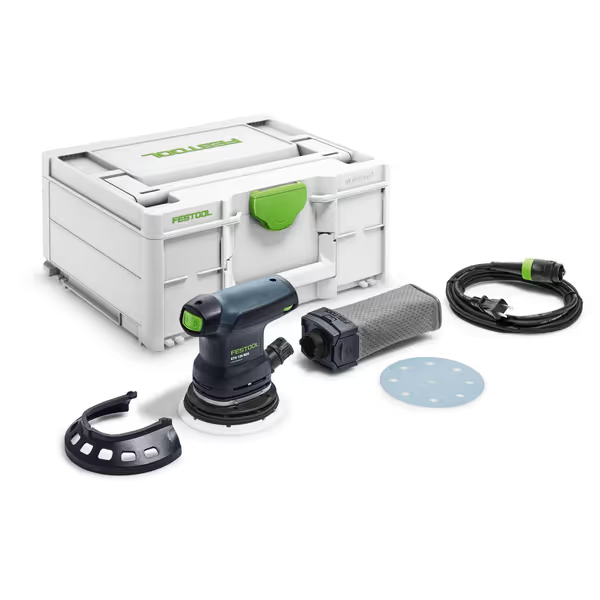
Festool ETS 125 REQ-Plus Orbital Sander
Q: How do I prevent sandpaper clogging when working with oily tropical hardwoods?
A: Clogging is the enemy of consistent finish quality and crew health. When sanding oily woods, standard abrasives can lose 60%+ of their cutting ability within 30 seconds due to resin loading. Your solution involves three tactical moves:
-
Abrasive selection: Choose open-coat mesh abrasives with anti-static treatment. Mesh systems maintain 85-90% cutting efficiency versus 60-70% for standard paper when working with oily exotics. Track your mesh abrasive loading %, if it exceeds 25%, you're wasting time and risking uneven scratch patterns.
-
Cleaning protocol: Use a resin solvent block (like citrus-based cleaners) every 90 seconds during aggressive stock removal. This maintains cutting efficiency and reduces airborne particulate generation by up to 40%.
-
Dust control integration: Ensure your vacuum operates at minimum 130 CFM with HEPA filtration. Document your mg/m³ vs OEL references during sanding, you should stay below 5 mg/m³ for general dust and specific WELs for wood types. One pro shop I consulted reduced their average exposure from 8.2 mg/m³ to 3.1 mg/m³ simply by upgrading to static-dissipative hoses and optimizing cuff seals.
Q: What are the recommended vibrating sanding parameters for exotic woods to minimize HAVS risk?
A: Let's talk numbers. The average random orbit sander operates at 5-8 m/s² vibration. On dense woods requiring heavier pressure, you can exceed 10 m/s², dangerously close to the 5.0 m/s² A(8) exposure limit for 8 hours. Here's your safe protocol:
-
Tool selection: Balance vibration metrics with hose weight. Tools measuring below 4.5 m/s² at the handle (like certain low-vibration models) let you work 20-30% longer within safe exposure minutes.
-
Rotation structure: Implement 10-10-10 rotations (10 minutes sanding, 10 minutes prep, 10 minutes quality check) with anti-fatigue mats. This keeps your team's cumulative dose % well below dangerous thresholds.
-
Work positioning: When sanding tropical hardwoods overhead or vertically, maintain 3-point contact and rotate tasks hourly. Document your dBA at ear measurements, and note that quiet setups (<80 dBA) reduce fatigue and improve focus on surface quality.
I recall a project where a team member first noticed hand tingling during Ipe sanding. After implementing these controls, their vibration exposure dropped from 6.2 m/s² to 3.8 m/s² while maintaining productivity. Protect hands, lungs, and tempo; the finish will follow.
Q: What grit progression works best for dense exotic woods like Ipe or Wenge?
A: Forget standard sequences. Dense wood sanding techniques for exotics require smaller grit jumps and strategic intermediate steps:
| Wood Type | Recommended Progression | Special Notes |
|---|---|---|
| Ipe | 60 → 80 → 100 → 120 → 150 → 180 | Use 80 grit as first pass to remove mill marks; 150 grit is critical for eliminating 100-grit scratches |
| Wenge | 80 → 100 → 120 → 150 → 180 → 220 | Stop at 150 for oil finishes; go to 220 for water-based systems |
| Teak | 100 → 120 → 150 → 180 | Less aggressive progression due to high oil content |
Always verify scratch elimination between grits using 45-degree raking light. For a full methodology on selecting and sequencing abrasives, see our sandpaper grit progression guide. Never skip more than 2 grit numbers (e.g., 100→150) as this creates "ghost scratches" that only appear after finishing. One cabinet shop reduced rework by 65% simply by adding a mandatory 150-grit step between 120 and 180 for Brazilian Cherry projects.
Q: How can I maintain consistent scratch patterns across varied exotic wood surfaces?
A: Standardization is your quality insurance. Document these four parameters for each wood type:
- Orbital path density: 3 overlapping passes minimum, with 25% side-to-side overlap
- Pressure application: 1.5-2.5 lbs/sq in (use calibrated pressure gauges for training)
- Movement speed: 0.3-0.5 m/s (approximately 1 foot per second)
- Grit dwell time: 15-20 seconds per 1 sq ft at initial grits
When doing figured wood sanding, reduce orbit size to 3 mm and increase dwell time by 30%. To align technique with grain orientation and eliminate cross-grain marks, review our wood grain sanding guide. For visual consistency, create reference panels with documented parameters for each exotic species you work with. One flooring crew cut client complaints by 90% after implementing a simple checklist that required technicians to verify scratch pattern elimination at each grit stage before proceeding.
Q: What dust control measures are essential for indoor exotic wood projects?
A: Since you're working in occupied spaces where mg/m³ readings directly impact client satisfaction and crew health, implement these non-negotiable controls:
- Respiratory protection: Always use P2/P3 respiratory class masks for exotic woods (many contain irritants that standard dust masks won't stop) For PPE checklists and safe operating procedures, consult our power sander safety guide.
- Extraction verification: Perform pre-job flow tests to ensure 100% dust capture efficiency at the tool interface
- Containment strategy: Seal work areas with temporary barriers and negative air machines maintaining 0.01" water gauge pressure differential
- Real-time monitoring: Use handheld dust meters to document air quality before, during, and after sanding
One contractor I advised reduced client complaints to zero after implementing a "dust audit" protocol where they showed clients real-time mg/m³ readings. Their threshold? Never exceed 1.5 mg/m³ during interior work, regardless of wood type.
Final Considerations
Successful exotic wood sanding isn't about finding the fastest route, it is about establishing controls that deliver consistent results while protecting your most valuable assets: your team's health and your reputation for quality. When you balance vibration metrics with dust controls and species-specific parameters, you create a process where every technician can produce identical results under raking light inspection.
The next time you prepare for a project with Brazilian Cherry or Wenge, ask yourself: Does my sanding protocol account for the wood's specific density, oil content, and grain pattern? Will it keep my crew's vibration exposure below 2.5 m/s² A(8) with documented exposure minutes? Can I prove my dust capture meets <2.5 mg/m³ during operation?
For those seeking deeper technical specifications, I recommend reviewing the latest ISO 5349-1:2022 standards for hand-arm vibration and the updated ACGIH threshold limit values for wood dusts. Understanding these references transforms your approach from guesswork to precision craftsmanship, where every pass of the sander builds toward a finish that lasts.

